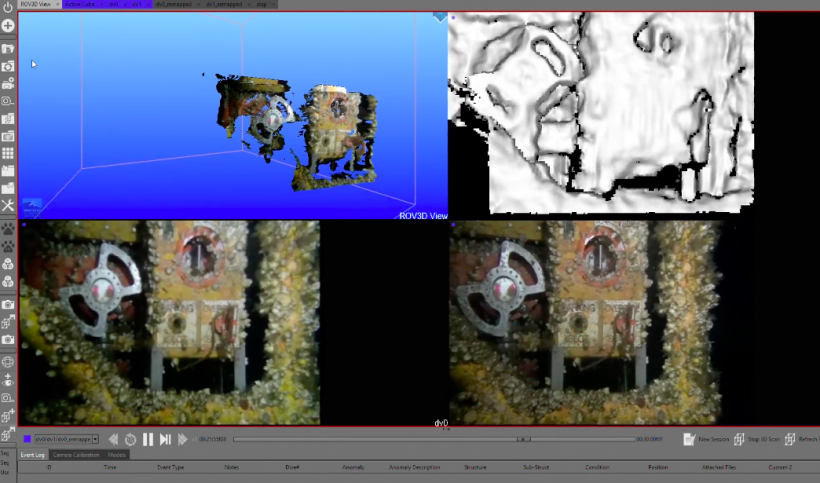The offshore oil fields around Newfoundland and Labrador have birthed a city of underwater drills and pipelines that are hard to monitor. New software from WhiteCap Scientific allows oil companies to see and interact with these underwater structures from a desktop.
The St. John's-based company has created ROV3D, which it describes as an upgrade on video inspections traditionally done by remotely operated vehicles, or ROVs. The new product generates interactive 3D reconstructions from video footage captured on unmanned vehicles, allowing inspectors to examine all parts of their “subsea factories” in greater detail.
“There’s a whole world down there, it kind of freaks me out,” Sam Bromley, Whitecap's CEO said in an interview. “With ROV3D, you can recreate a full three-dimensional object. And it’s interactive and live, and you can annotate it so if you see something of interest you can actually make a notice and hang it on your feature of interest.”
Bromley said companies that have offshore oil rigs currently rely on two-dimensional video feeds to inspect their equipment. By using 3D reconstructions, oil companies can make quicker decisions regarding their underwater equipment and potentially prevent oil spills and other tragedies.
He said: “Imagine a world of complicated factory equipment that you can never get close to yourself. You know, you can never actually get your hands on it. It’s always kilometers away through flat video, with a ROV with a robotic arm, and that’s it. Oil and gas is an extremely frustrating and difficult endeavour because of its remoteness.”
Since launching the ROV3D software in 2014, WhiteCap has worked with big industry players like BP, Shell, Exxon and Maersk. Bromley said the company has just finished a month-long campaign with Suncor, a Canadian oil company that operates the Terra Nova oil field.
WhiteCap was one of 12 companies to graduate from the first cohort of the Creative Destruction Lab Atlantic division. Through that program, Bromley travelled to Toronto to take part in the CDL Super Session, which celebrated the graduates.
12 Firms Graduate from CDL-Atlantic
Bromley and his company had been working out of the Genesis Centre at Memorial University but have moved into their own office space in downtown St. John’s.
With key customers now in his rolodex, Bromley plans to expand into the huge oil and gas industry in his own backyard.
There are four major oil fields in Newfoundland waters: the White Rose; Hibernia; Hebron, and Terra Nova. In Feburary, the province announced a 12-year plan to double the amount of oil produced from those fields to 650,000 barrels a day by 2030.
“We are so perfectly situated in the pulse of oil and gas,” said Bromley. “I really see Newfoundland as one of the key global hubs for offshore oil and gas activity.”
And now that ROV3D has been verified as a software solution for the oil and gas sector, Bromley plans to tackle new verticals, or target industries, that would benefit from his technology.
"I hope that people see us as a group that really wants to effect change,” he said. “What’s most important to us is industry adoption of a new way of doing things and that’s why we focused on lowering the barriers of adoption for new verticals.”










